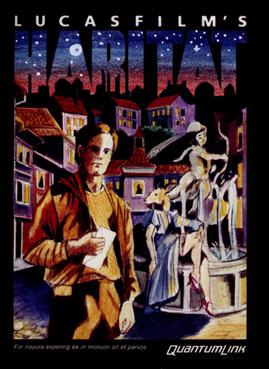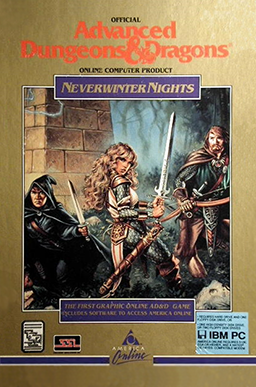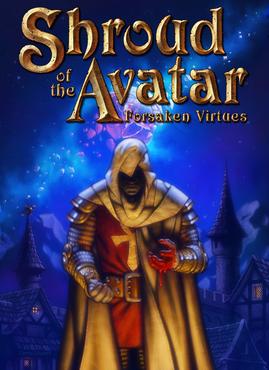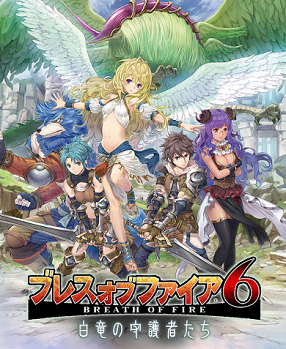
EverQuest is a 3D fantasy-themed massively multiplayer online role-playing game (MMORPG) originally developed by Verant Interactive and 989 Studios for Windows PCs. It was released by Sony Online Entertainment in March 1999 in North America, and by Ubisoft in Europe in April 2000. A dedicated version for Mac OS X was released in June 2003, which operated for ten years before being shut down in November 2013. In June 2000, Verant Interactive was absorbed into Sony Online Entertainment, who took over full development and publishing duties of the title. Later, in February 2015, SOE's parent corporation, Sony Computer Entertainment, sold the studio to investment company Columbus Nova and it was rebranded as Daybreak Game Company, which continues to develop and publish EverQuest.
A multi-user dungeon, also known as a multi-user dimension or multi-user domain, is a multiplayer real-time virtual world, usually text-based or storyboarded. MUDs combine elements of role-playing games, hack and slash, player versus player, interactive fiction, and online chat. Players can read or view descriptions of rooms, objects, other players, and non-player characters, and perform actions in the virtual world that are typically also described. Players typically interact with each other and the world by typing commands that resemble a natural language, as well as using a character typically called an avatar.
A massively multiplayer online role-playing game (MMORPG) is a video game that combines aspects of a role-playing video game and a massively multiplayer online game.

A role-playing game is a game in which players assume the roles of characters in a fictional setting. Players take responsibility for acting out these roles within a narrative, either through literal acting or through a process of structured decision-making regarding character development. Actions taken within many games succeed or fail according to a formal system of rules and guidelines.

Ultima is a series of open world fantasy role-playing video games from Origin Systems, created by Richard Garriott. Electronic Arts has owned the brand since 1992. The series had sold over 2 million copies by 1997.
A virtual economy is an emergent economy existing in a virtual world, usually exchanging virtual goods in the context of an online game, particularly in massively multiplayer online games (MMOs). People enter these virtual economies for recreation and entertainment rather than necessity, which means that virtual economies lack the aspects of a real economy that are not considered to be "fun". However, some people do interact with virtual economies for "real" economic benefit.

Neverwinter Nights is a third-person role-playing video game developed by BioWare. Interplay Entertainment was originally set to publish the game, but financial difficulties led to it being taken over by Infogrames, who released the game under their Atari range of titles. It is the first installment in the Neverwinter Nights series and was released for Microsoft Windows on June 18, 2002. BioWare later released a Linux client in June 2003, requiring a purchased copy of the game to play. MacSoft released a Mac OS X port in August 2003.
Scott Jennings, also known as Lum the Mad, is an American commentator on MMORPG games. He is best known for creating a website, The Rantings of Lum The Mad, a pioneer blog, which existed from 1998 to 2001, when Jennings was hired by MMO developer Mythic Entertainment, where he remained until 2006.

Habitat is a massively multiplayer online role-playing game (MMORPG) developed by LucasArts. It is the first attempt at a large-scale commercial virtual community that was graphic based. Initially created in 1985 by Randy Farmer, Chip Morningstar, Aric Wilmunder and Janet Hunter the game was made available as a beta test in 1986 by Quantum Link, an online service for the Commodore 64 computer and the corporate progenitor to AOL. Both Farmer and Morningstar were given a First Penguin Award at the 2001 Game Developers Choice Awards for their innovative work on Habitat. As a graphical MUD it is considered a forerunner of modern MMORPGs unlike other online communities of the time. Habitat had a GUI and large user base of consumer-oriented users, and those elements in particular have made Habitat a much-cited project and acknowledged benchmark for the design of today's online communities that incorporate accelerated 3D computer graphics and immersive elements into their environments.
Robinson Technologies is a video game developer located in Japan and founded by Seth Robinson. The company produced the BBS door games Legend of the Red Dragon, Planets: The Exploration of Space and Growtopia, an experimental multiplayer creative sandbox created as a collaboration with Hamumu Software, released in 2013 for iOS, Android, Microsoft Windows, and macOS.

Dungeons & Dragons Online is a massively multiplayer online role-playing game (MMORPG) developed by Turbine for Microsoft Windows and OS X. The game was originally marketed as Dungeons & Dragons Online: Stormreach. Upon switching to a hybrid free-to-play model it was renamed Dungeons & Dragons Online: Eberron Unlimited. The game was rebranded Dungeons & Dragons Online, with the introduction of Forgotten Realms-related content. Turbine developed Dungeons & Dragons Online as an online adaptation of Dungeons & Dragons (D&D), originally based loosely on the D&D 3.5 rule set. The game is set on the unexplored continent of Xen'drik within the Eberron campaign setting, and in the Kingdom of Cormyr within the Forgotten Realms campaign setting.

Neverwinter Nights was an early graphical multiplayer online role-playing game, which ran from 1991 to 1997 on AOL.
The history of massively multiplayer online games spans over thirty years and hundreds of massively multiplayer online games (MMOG) titles. The origin and influence on MMO games stems from MUDs, Dungeons & Dragons (D&D) and earlier social games.

Dark Sun Online: Crimson Sands was an early massively multiplayer online role-playing game (MMORPG) that was developed and published by Strategic Simulations, Inc. in 1996 for Windows 95. Dark Sun Online was based on the licensed Dark Sun campaign setting for the Advanced Dungeons & Dragons tabletop role-playing game. It was one of the first fully graphical MMORPGs.
Social interactions in MMORPGS take the form of in-game communication, virtual behaviors, and the development of interpersonal and group relationships. In massive multiplayer online role-playing games (MMORPGs), cooperation between players to accomplish difficult tasks is often an integral mechanic of gameplay, and organized groups of players, often called guilds, clans, or factions, emerge. Sometimes the relationships players from within the game spill over into friendships or romantic relationships in the material world. In other instances, romantic partners and groups of material world friends find that playing together strengthens their bonds.

Neverwinter Nights is a series of video games developed by BioWare and Obsidian Entertainment, based on the Forgotten Realms campaign setting of the Dungeons & Dragons role-playing game. Aside from also being set around the city Neverwinter, it is unrelated to both the 1991 Neverwinter Nights online game and the 2013 online game called Neverwinter.

Shroud of the Avatar: Forsaken Virtues is a fantasy role-playing video game. Described as being a spiritual successor to the Ultima series, Shroud of the Avatar was developed by Austin, Texas-based developer Portalarium, with a team led by Richard Garriott as creative director, Starr Long as executive producer, Chris Spears as lead technical designer, and Tracy Hickman as lead story designer. It is currently maintained by Catnip Games.

Breath of Fire 6: Hakuryū no Shugosha-tachi was a free-to-play online, web-based multiplayer role-playing video game with microtransactions developed and published by Capcom as the sixth main installment of its Breath of Fire series. The game was released in Japan on February 24, 2016 for Microsoft Windows computers and Android devices, with an iOS release following on July 12, 2016. Online operations for the title officially ceased on September 27, 2017.

Avatar Legends: The Roleplaying Game is a fantasy tabletop role-playing game produced by Magpie Games. It is set in the world of the animated television series Avatar: The Last Airbender and The Legend of Korra, and takes place in five different time periods. It sees players take the roles of martial artists, technological experts, or benders – people who can manipulate one of the four classical elements – who fight for balance in the world while also working towards their own goals and struggling with inner balance, represented by opposing ideals held by a character.












